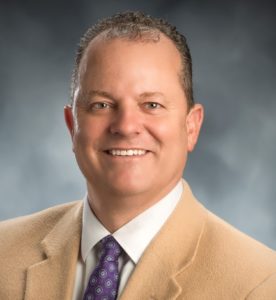How a Partner Advisory Council can build successful relationships between vendors and providers
Ed Hardin will tell you, relationships take work. Hard work. Continual work. Work through good times, work through bad times. In fact, he would say that in order to build successful business relationships, you must make work part of your – and your team’s – DNA. That’s why he created a Partner Advisory Council (PAC) when he was system vice president at CHRISTUS Health in Dallas, Texas, and that’s why he intends to do something similar as senior vice president of supply chain management at Beaumont Health in southeast Michigan, which he joined in October 2016. It’s about taking vendor relationship management seriously.
Get strategic vendors involved
The key to a successful PAC is to involve the health system’s most strategic vendors, each of whom dedicate a single individual – ideally, an executive with little to no transactional responsibilities – to meet regularly to discuss ways to improve their supply chain relationship, says Hardin. He attributes the success of his previous council “to the many incredible individuals who saw the value of collaboration and committed their time, energy and thought leadership to make it happen.”
About four months into his tenure at Beaumont Health, Hardin called together five of the most active Partner Advisory Council members at his previous health system. “We held a very candid, lengthy – and sometimes painful – meeting to discuss lessons learned from the original formation,” he says. As a result, he intends to limit the number of participants on the Beaumont Health council to 16 members, with as few competitive conflicts as possible. Quarterly in-person meetings will be supplemented with video conferences when necessary.
Collaboration will be the key. “The feedback from former PAC members was to section off the meetings with opportunities for council members to participate,” says Hardin. “But keep in mind, they are participating with other council members, so it’s unlikely anyone will use it as a sales opportunity.” Nor will price be a topic of discussion. “There is a recognition [by participants] that this isn’t about price,” he says. “That said, we can discuss things that may reduce each other’s cost to serve, which may be reflected in price reductions.”
A safe place
If history is any guide, vendor members may very well be reluctant to speak up at their first few meetings. “With all these different people involved, they’re not sure if this is a safe place to talk or not,” says Hardin. “But usually, by the second year, there’s a sense of comfort. They understand that our goal is to change the trajectory of the health system. And there’s always an industry mindset – we bring people back to the needs of the industry, so we can create something that will be a legacy for others.”
As he has in the past, Hardin intends to invite supply chain executives from other healthcare systems to occasionally sit in on council meetings. In addition, he intends to encourage council members to invite other members of their teams to occasionally join council meetings, and to generate more participation from Beaumont Health senior executives too. “We want to ensure that the ‘collaboration gospel’ is socialized [among suppliers and the health system],” he says.
As with his former PAC, Hardin expects the early going at Beaumont to be hard work. “It takes extra time – time out of people’s days.” But the payoff for both the provider and suppliers is worth it. “We made it part of our DNA as to how we operated,” he says. “We challenged suppliers to deliver measurable value to us, and once we started to prove this out, we extended our agreements with them and socialized these examples to the rest of the supplier community.”
Supply chain school
As an adjunct professor with the Satish & Yasmin Gupta College of Business of the University of Dallas, Ed Hardin learned as much as he taught about the future of supply chain. And he expects to continue to do so by serving on the advisory board of the Wayne State University Global Supply Chain Management program.
“I truly enjoy working with young people,” says Hardin, senior vice president of supply chain management at Beaumont Health. “They challenge me and I challenge them. Nothing means more to me than to see people grow professionally and personally.”
Hardin is optimistic about the future of supply chain for several reasons.
“First is the proliferation of supply chain undergraduate and graduate programs,” he says. “I don’t believe we’ve reached the saturation point, as the programs I’ve encountered in the Michigan area are quite good. They’re graduating very qualified workers, and some are even considering healthcare.
“Second, we’ve become a ‘sexier’ profession, and are finding our way out of the basement and into the halls of senior leaders. We’re also surrounding ourselves with some rather impressive technology and starting to pay ourselves more competitively.
“All in all, we’re becoming a profession that I believe gives young people pause to say, ‘Perhaps I should take my supply chain skills to a place where they can really be used and where I can be supported.’”

